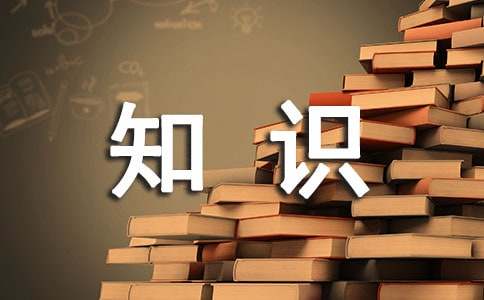- 相关推荐
初一英语下学期unit8知识点整理
上学的时候,很多人都经常追着老师们要知识点吧,知识点就是学习的重点。还在为没有系统的知识点而发愁吗?以下是小编精心整理的初一英语下学期unit8知识点整理,欢迎大家借鉴与参考,希望对大家有所帮助。

初一英语知识点节选
1.动词be(is,am,are)的用法
我(I)用am,你(you)用are,is跟着他(he),她(she),它(it)。单数名词用is,复数名词全用are。变否定,更容易,be后not加上去。变疑问,往前提,句末问号莫丢弃。还有一条须注意,句首大写莫忘记。
2.this,that和it用法
(1)this和that是指示代词,it是人称代词。
(2)距离说话人近的人或物用this,距离说话人远的人或物用that。如:
Thisisaflower.这是一朵花。(近处)
Thatisatree.那是一棵树。(远处)
(3)放在一起的两样东西,先说this,后说that。如:
Thisisapen.Thatisapencil.这是一支钢笔。那是一支铅笔。
(4)向别人介绍某人时说Thisis…,不说Thatis…。如:
ThisisHelen.Helen,thisisTom.这是海伦,海伦,这是汤姆。
(5)Thisis不能缩写,而Thatis可以缩写。如:
Thisisabike.That’sacar.这是一辆自行车。那是一辆轿车。
(6)打电话时,介绍自己用this,询问对方用that。如:
—Hello!IsthatMissGreen?喂,是格林小姐吗?
—Yes,thisis.Who’sthat?是的,我是,你是谁?
注意:虽然汉语中使用“我”和“你”,但英语中打电话时绝不可以说:Iam…,Areyou…?/Whoareyou?
(7)在回答this或that作主语的疑问句时,要用it代替this或that。如:
①—Isthisanotebook?这是笔记本吗?
—Yes,itis.是的,它是。
②—What’sthat?那是什么?
—It’sakite.是只风筝。
3.these和those用法
this,that,these和those是指示代词,these是this的复数形式,指时间,距离较近的或下面要提到的人或事;those是that的复数形式,指时间、距离较远或前面已经提到过的人或事物。
①Thisismybed.ThatisLily’sbed.这是我的床。那是莉莉的床。
②Thesepicturesaregood.那些画很好。
③Arethoseappletrees?那些是苹果树吗?
在回答主语是these或those的疑问句时,通常用they代替these或those以避免重复。如:
④Arethese/thoseyourapples?这些(那些)是你的苹果吗?
Yes,theyare.是的,他们是。
4.名词+’s所有格
单数名词后直接加“’s”:
Jim’scoat吉姆的外套Jeff’smother杰夫的妈妈
以s结尾的复数名词,只加“’”
Teachers’Day教师节thetwins’books双胞胎的书
不以s结尾的不规则的名词复数,加“’s”
Children’sDay儿童节men’sshoes男式鞋
表示两者共同拥有时,只在最后一个名词后加’s
LucyandLily’smother露茜和莉莉的妈妈(共同的妈妈,一个妈妈)
表示两者各自拥有时,要在每个名词后加’s
Lucy’sandKate’srooms露茜和凯特的房间(各自的房间,两间房子)
重点短语
1.Sit down
2.on duty
3.in English
4.have a seat
5.at home
6.look like
7.look at
8.have a look
9.come on
10.at work
11.at school
12.put on
13.look after
14.get up
15.go shopping
交际用语
1.-Thanks very much!
-Youre welcome.
2.Put it/them away.
3.Whats wrong?
4.I think so.
I dont think so.
5.I want to take some books to the classroom.
6.Give me a bottle of orange juice, please.
Please give it / them back tomorrow. OK.
9.Whats your favourite sport?
10.Dont worry.
重要句型
1.Let sb. do sth.
2.Could sb. do sth.?
3.would like sth.
4.would like to do sth.
5.What about something to eat?
6.How do you spell …?
7.May I borrow…?
8.Im(not) good at basketball.
9.Do you want a go?
10.Thats right./ Thats all right./ All right.
11.Do you have a dictionary / any dictionaries?
Yes,I do. / No, I dont.
12.We / They have some CDs.
We/ They dont have any CDs.
13.---What day is it today / tomorrow?
---Its Monday.
14.---May I borrow your colour pens, please?
---Certainly.Here you are.
15.---Where are you from?
---FromBeijing.
16.Whats your telephone number in New York?
17.---Do you like hot dogs?
---Yes,I do. ( A little. / A lot. / Very much.)
---No,I dont. ( I dont like them at all.)
18.---What does your mother like?
---Shelikes dumplings and vegetables very much.
19.---When do you go to school every day?
---I go to school at 7:00 every day.
20.---What time does he go to bed in the evening?
---He goes to bed at 10:00.
并列连词有哪些:
and和
but但是
nor也不
so因而
yet然而
however可是
hence从此
then然后
for因为
or或者,否则
nevertheless然而
aswellas也,又
notonly...butalso不仅……而且
both...and两者都
neither...nor既不……也不……
either...or或者……或者
第一:名词
名词可分为专有名词与普通名词,可数名词与不可数名词,简单名词与复合名词。学习本章后要求学员掌握可数名词复数的变化形式,特别是名词的不规则复数形式的变化;掌握复合名词的复数形式;掌握名词所有格的构成及用法;注意区分可数名词与不可数名词。
第二:冠词
冠词置于名词之前,用来说明名词所指的人或事物,它不能离开名词而单独存在。
英语冠词有:
1、定冠词:主要功用为特指,表示同类中的某一人或某一类人和物。
2、不定冠词:主要功用为泛指,指某类人或物中的任何一个或某一个。
3、零冠词:它是名词中的一种无形冠词,用在一般所谓的不定冠词的场合。
有三类名词使用零冠词:复数可数名词,不可数名词(用单数形式)及专有名词。
①in+月、年the morning/afternoon/evening/aweek表示时间
②on+具体某一天(几月几日)/某个假期(…Day)
③at+具体某点时间、某个假期(…Festival)/theweekend
表示方位:
①in…street
②on…road/left/right
③at the…crossing/stop/某个具体的地点
①in the tree(不是树上长出来的)
②on the tree(树上原来自己长出来的)
表示时间:
① ago(……以前) later(……以后)
② before (在……以前) after(在……以后)
第三:形容词
形容词是用来修饰或描述名词(或代词),表示人或事物性质、状态和特征的词。
一、形容词的分类:
简单形容词e.g. big, small, windy, cold, fine, black, old, happy
复合形容词e.g. good-looking, kind-hearted, warm-hearted
二、形容词的位置:
1、通常放在名词前面。
Andy is a good student at school.
2、用在系动词的后面。
Abby’s dress is nice.
3、用在不定代词后面。
There is something wrong with my watch.
三、形容词的排列顺序
描绘形容词→大小(长短高低)形容词→形状形容词→年龄(新旧)形容词→颜色形容词→国籍形容词→材料形容词→用途(类别)形容词→名词
a tall fat English teacher
四、形容词的比较等级
1、形容词的三个比较等级:原级,比较级,级
表示二者相比“等于”时用原级;二者比较有优势之分时用比较级;三者或三者以上的比较“最……”的级。
2、形容词比较级的构成
四、规则变化
不规则变化
主谓一致:
1、主语是he ,she, it, either, neither, each, anything, something, everything, nothing, someone, everyone, anyone, nobody, no one,等代词时,谓语动词用单数。
Someone is asking for you.有人在找你。
Everyone is here.大家都来了。
Each of the boys has an apple.
2、表示总称意义的名词people, cattle, police做主语时,谓语动词用复数。
Cattle are farmer’s friends.
The policeman is standing at the street corner. The police are searching for him.
3、主语是:时间,距离,价格等名词,即使是复数形式,谓语动词只用单数。
Three years passes quickly.
Two meters is not long enough.
4、主语是:clothes, glasses, trousers, shoes, socks, gloves等名词时,谓语动词用复数。
The trousers are not expensive.
Your socks are over there.
5、主语是:family, class, team, group等名词时,如果是作为整体,谓语动词用单数;如果作为其中一个个的成员,谓语动词用复数。
Our class is made up of ten students.
Our class are working very hard.
6、主语是the number of+名词复数时,表示……的数目,谓语动词用单数。但是主语是a number of+名词复数时,表示许多,谓语动词用复数。
The number of students in our school is large.
A number of students in our school are from America.
7、and连接的两个成对的名词:fork and knife, bread and butter, coffee and water等,表示单一的概念,故谓语动词用单数。
Where is youe fork and knife?
Bread and butter is a daily food in the west.
8、and连接的两个名词若是指同一个人,谓语动词用单数。
The teacher and writer is my uncle.
The teacher and the writer are coming to us now.
9、and连接的两个名词前分别有every, each, many a修饰时,谓语动词用单数。
Every boy and every girl enjoys themselves in the school.
Many a teacher and many a student has spoken at the meeting.
10、主语是:many a +名词单数;a +名词单数+or two,谓语动词用单数。
Many a student is interested in English.很多学生对英语感兴趣。
A worker or two is going to be sent to work abroad.一两个工人将被派往国外去工作。
【初一英语下学期unit8知识点整理】相关文章:
初一英语下册知识点整理01-27
初一英语上册知识点归纳整理04-07
初一英语词法知识点整理12-01
初一英语句式知识点整理12-01
初一英语上册语法知识点整理09-28
初一英语上册重点短语知识点整理01-27
生物的进化知识点整理01-26
生物的生殖知识点整理03-03
生物的变异知识点整理01-26